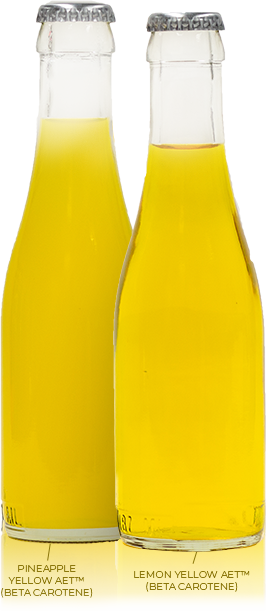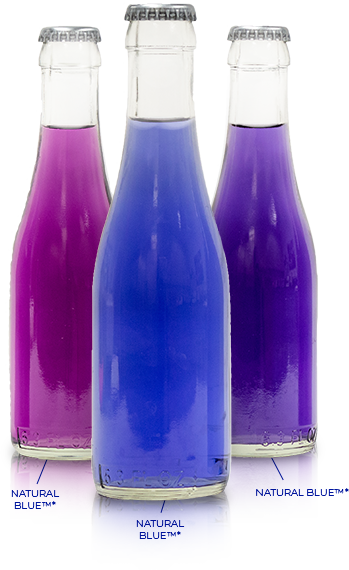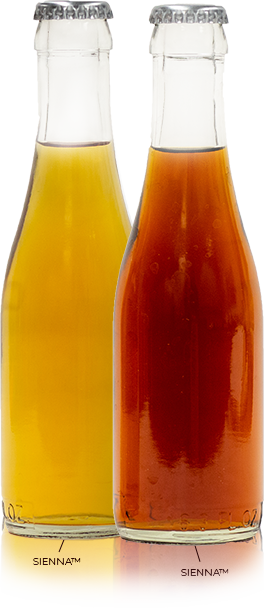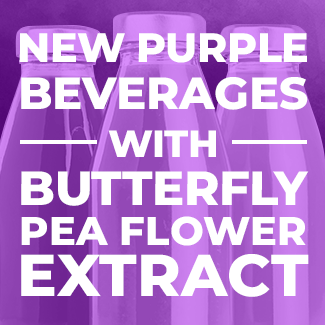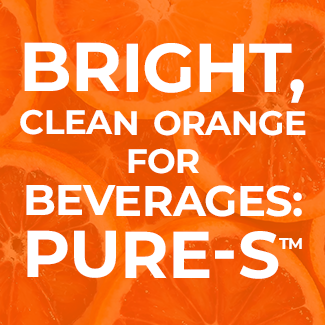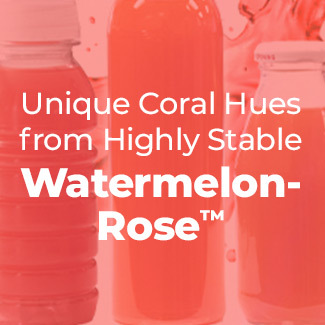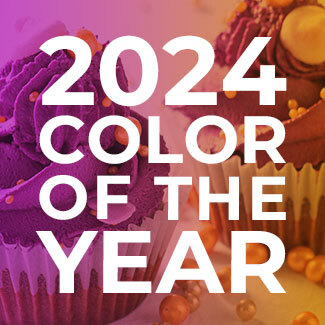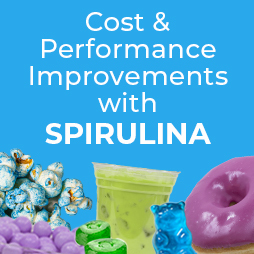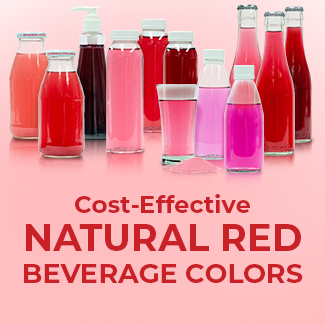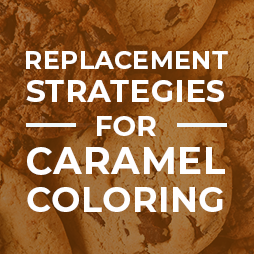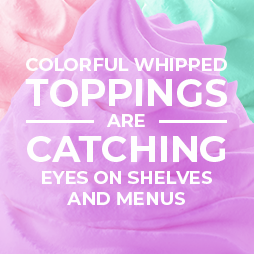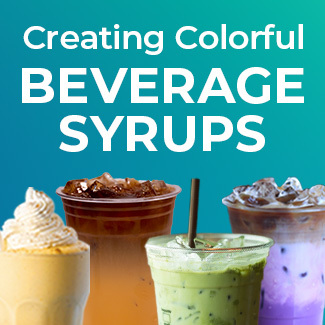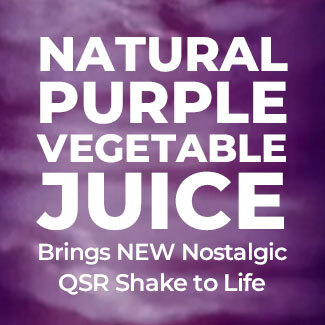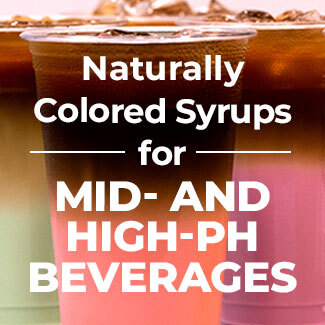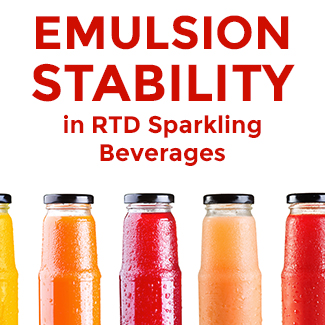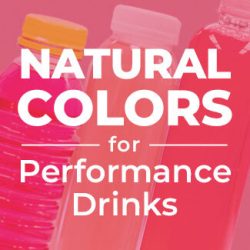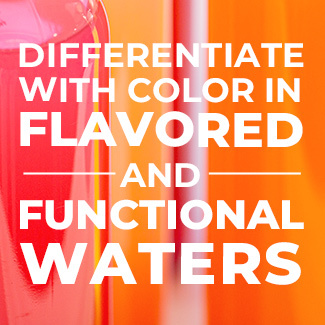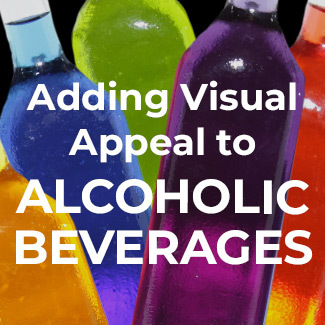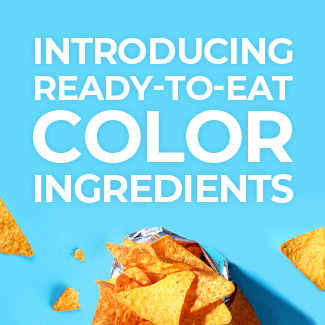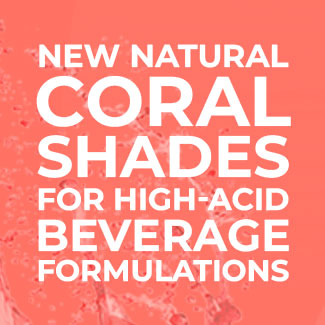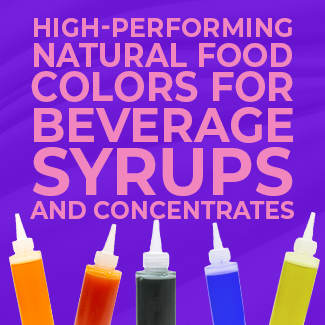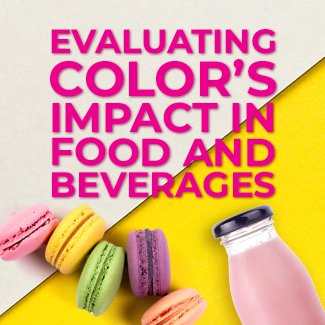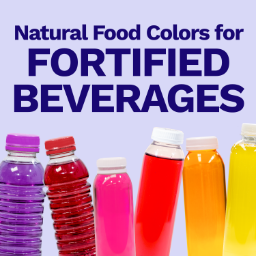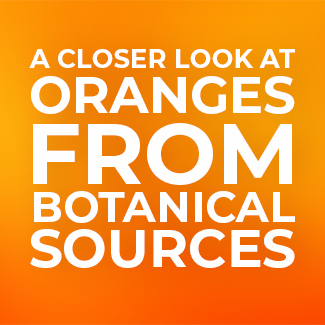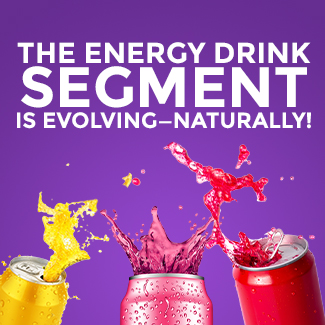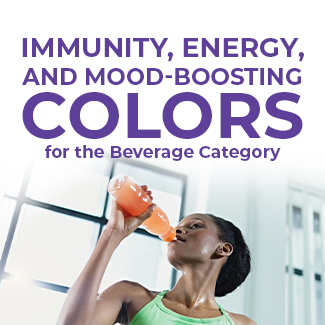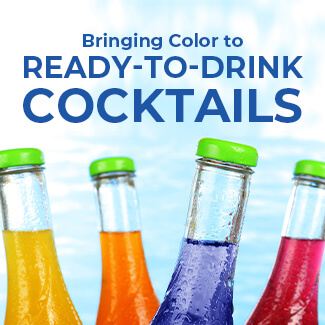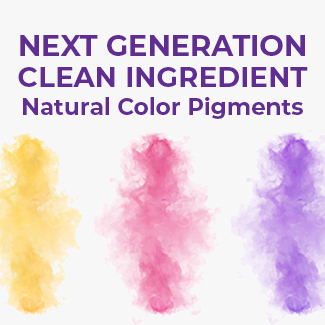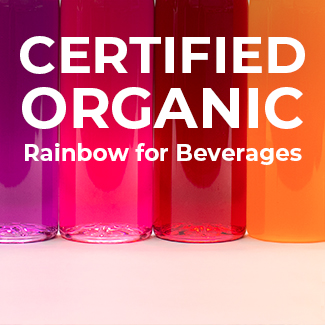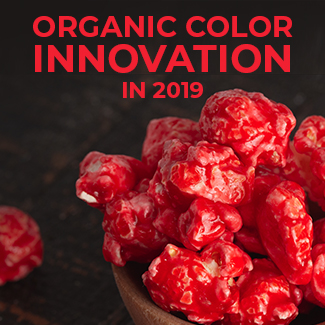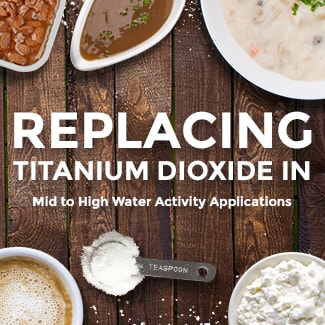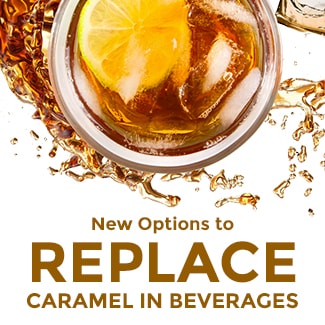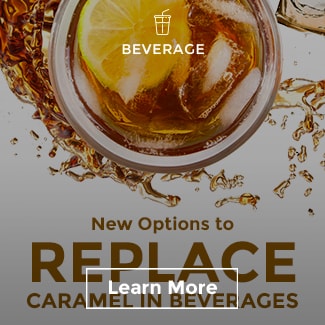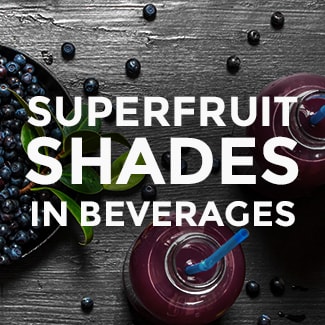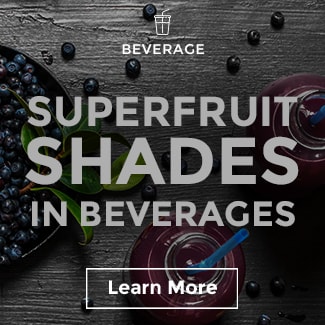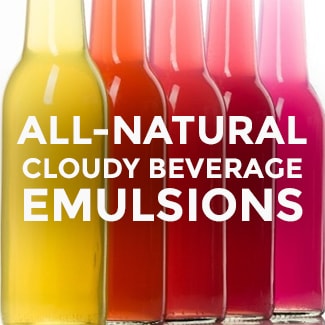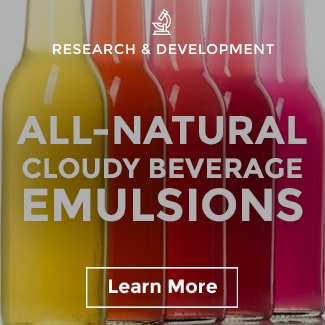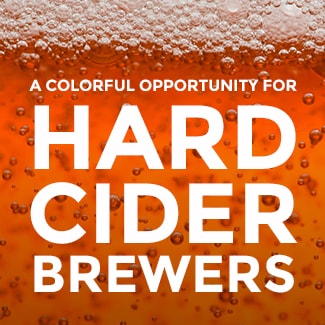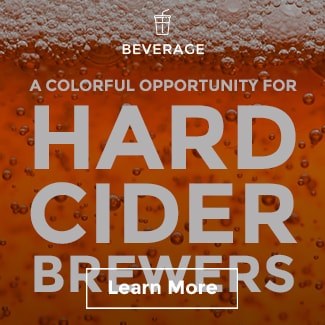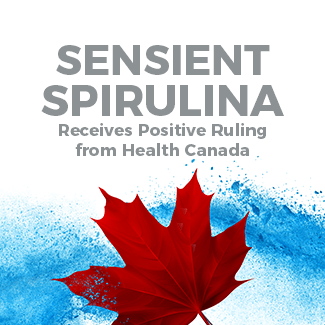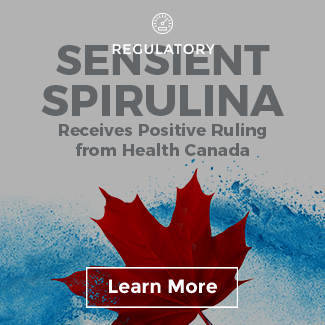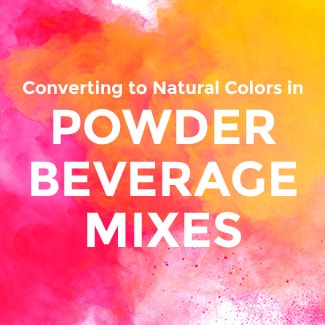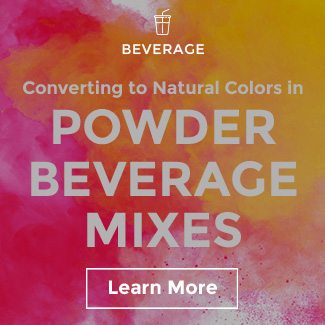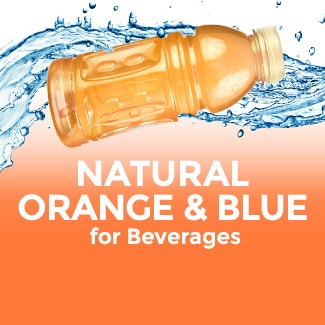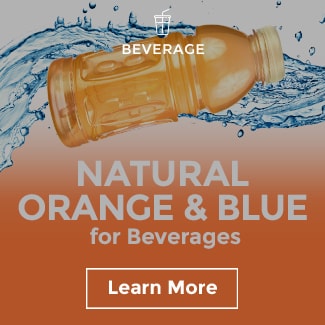A Natural Rainbow of Flavored Malt Beverages
Whether it’s a spiked seltzer or hard tea, the malt beverage category continues to offer better-for-you, low alcoholic alternatives to spirits and beers. In fact, it was the largest growing category in food and beverage in the last five years with +20% growth, even stealing some market share from the beer category (Mintel 2019).
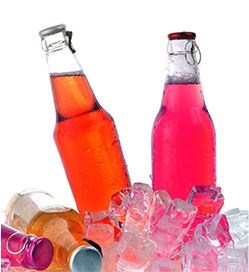
While the hard seltzer and tea category continue to grow, brand distinction and differentiation will become more challenging. There is a major opportunity here for natural and certified organic food color to help brands stand out visually. In Sensient’s Value of Color research, vibrantly colored products increased purchase intent in beverages by 6%. In this same study, category consumers correlated brighter color to a better taste profile, which is especially important to consider since flavor is a key driver of purchase. Vivid color conveys taste and flavor even before consumers grab from the shelf and opens the can or bottle. Brand Managers and Product Developers of seltzers, mocktails, bottled cocktail-inspired drinks should seriously consider vibrant color if they are marketing on taste or flavor experience.
Given the health halo around these flavored malt beverages, natural or certified organic color is the obvious selection for refreshing better-for-you alcoholic offerings. There are four key items to consider when formulating with colors from botanical sources in malt beverage systems…

Most malt beverage formulations are low pH (3.0-3.5), which is a great range for natural colors as nearly a rainbow of options are available here. Some natural blue shades present better in pHs closer to 4.0, but if acidity adjustments are an option, then there are some very unique indigos and blueberry shades available from natural sources like Sensient’s blue vegetable juice.

When alcohol and beer makers develop a new formula, both the final product AND each contributing ingredient must be approved by the Alcohol and Tobacco Tax and Trade Bureau (TTB). Food colors are no exception, so you want to ensure you are developing with TTB-approved natural colors from the start in order to streamline formulation work. Luckily, Sensient has a full portfolio of TTB-approved natural color options that have been fully vetted for performance and stability in alcoholic beverages.

Though not as critical as pH or TTB approval, another consideration is light stability. Most natural colors are light stable, and their shades will survive light exposure from store shelf light to sunlight, with one exception–yellow shades from turmeric will fade over time. But don’t fret, because there are other natural yellows like beta-carotenes that also provide an excellent range of yellow shades from golden pineapple to bright starfruit.

Because this category is growing so quickly, many companies are moving fast with new formulas. One of the biggest challenges for emerging brands in this space is going from benchtop to bottling, particularly with an all-natural formulation. Order of ingredient addition in commercial scale-up can make a big difference in performance of natural colors and flavors. Our experts can proactively troubleshoot your processes to ensure smooth production runs that deliver a product that looks and tastes great.

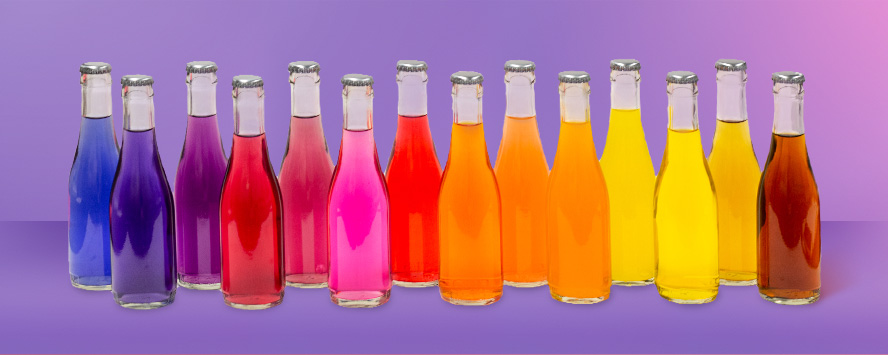

Anthocyanins, like black carrot, can provide deep red shades in low pH malt beverages. Sensient’s Agronomy team has made great strides on black carrot color solutions, and our red or magenta black carrots are an extremely cost-effective option thanks to their dedicated work on pigment optimization.
Grape skin extract is another option in the red family, exhibiting more of a rose hue in these beverage systems, lending itself to Rosé and floral flavor profiles. At our Italy facility, Sensient partners with grape growers and winemakers to upcycle unused grape skins from the wine production process for natural color extraction, which lends itself to a positive environmental responsibility story from a color ingredient.
If you’re looking for an eye-catching bright pink shade, color from purple sweet potatoes delight beverages with a stunning hot neon pink, perfect for sweet cocktails, flamingos, and unicorns.

Orange beta-carotenes and carrots perform well in low-alcohol beverages, and a variety of shades are available. Preferred cloudiness is also a color consideration for developers. Some natural colors like most orange carrot juices are inherently cloudy, while others like beta-carotenes have both clear and cloudy options available.
Color from paprika extract produces the most brilliant orange shades, but it can also bring undesirable flavor off-notes to beverages. However, Sensient’s Pure-S™ gentle purification technology reduces and eliminates the paprika spice off-notes and odors so you can unleash the full potential of nature’s brightest oranges in malt beverage applications.

Yellow beta-carotenes options are also available; although since carotenoids like orange and yellow beta-carotenes are inherently oil-soluble, emulsification is required for the natural color to perform in a water-based malt beverage system. Sensient’s Advanced Emulsion Technology (AET™) reduces particle size to ensure stability when using these oil-soluble natural food colors.
Turmeric is also an option for bright yellow if the beverage package is opaque like cans, but due to light sensitivity, our expert color technologists do not typically recommend it for bottled beverages, as the bright yellow food coloring will fade under shelf life conditions over time.
*BUTTERFLY PEA FLOWER EXTRACT SHOWN AT DIFFERENT ACIDITY LEVELS

Blue (and therefore purple, often a simple blend of a natural blue and red) has historically been difficult to achieve with natural food coloring in low pH beverages specifically. But market options like Sensient’s Butterfly Pea Flower Extract provides beautiful denim shades at pH 4.0 and superfruit, royal purple hues closer to pH 3.0.

Brown fruit and vegetable juice blends can provide caramel or hazelnut hues, but a more cost-effective alternative to blends is Sensient’s exclusive Sienna™ fruit juice, which provides a range from beautiful golden ginger ale shades to rich chocolate-y brown colors.
No matter what shade you want to create to enhance your taste profile, our beverage application experts are here to help!
If you see a shade you love above, feel to request a sample here.





